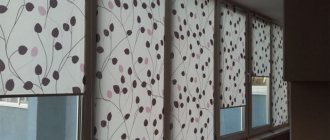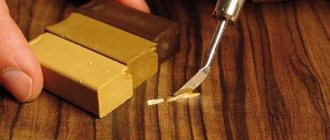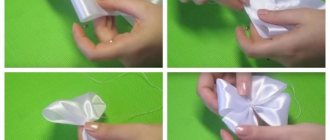No. 1. Why do plastic windows need insulation?
In the first few years, well-made and installed plastic windows will certainly be a reliable barrier to cold air, drafts and noise. Over the years, of course, problems can arise, and often the user himself is to blame. If installation is done incorrectly, various defects can make themselves felt in the first season.
The most common reasons for additional thermal insulation of plastic windows:
- installation performed in violation of technology;
- shrinkage of the building, which is especially typical for new buildings;
- wear of rubber insulation. Responsible manufacturers and installers inform the user about the rules for caring for the rubber seal, but few follow the rules and regularly inspect the condition of this structural element. Lack of proper care leads to an accelerated process of thinning and drying of the rubber, the appearance of microcracks in its structure, the result is a decrease in the tightness of the fit to the frame and deterioration of thermal insulation;
- incorrectly installed slopes.
A window of poor quality or with technical characteristics that do not correspond to climatic conditions will also not be able to provide normal thermal insulation, which is why it is so important to be able to choose the right plastic window and immediately decide on a suitable double-glazed window.
Protection for polyurethane foam
PSUL (abbreviation for self-expanding tape) is glued to the frame before installing it in the window opening. Within about half an hour (depending on the ambient temperature), it increases in volume, filling the space at the outer junction of the edge of the opening with the window frame.
PSUL tape serves as reliable protection for polyurethane foam from all possible destructive processes, because it:
- does not rot;
- moisture resistant;
- does not deteriorate from exposure to sunlight;
- has good vapor permeability;
- when expanded, it perfectly fills small protrusions and irregularities;
- retains its protective functions at temperatures from -50 to +90.
The service life of the self-expanding tape is 50 years and, in theory, its protection is sufficient for external slopes. But, unfortunately, there are no ideal finishing materials.
Therefore, the self-expanding tape also needs protection, and such finishing protection can be the installation of external slopes.
No. 2. We identify weak points
To effectively insulate plastic windows, you must first understand where the seal is broken. The only thing you can immediately remove from the list of suspects is the frame: multi-chamber plastic is a good heat insulator, it does not dry out, unlike wood.
Cold air can penetrate through the following structural elements:
- clamping elements that tend to loosen over time;
- a detached glazing bead that holds the glass unit in place;
- worn out seal;
- polyurethane foam, if it was applied in violation of technology;
- windowsill;
- slopes.
A double-glazed window rarely causes a violation of thermal insulation (the exception is its depressurization), but it can also be additionally insulated. “Extra” heat in winter will not hurt.
to identify leaky window - just run your palm along and across the entire structure, and you will feel that there is a decent amount of wind in some places. Some people recommend using a lighter for this purpose. If you light a flame and pass it around the perimeter of the window, maintaining a safe distance, it will tilt in those places where there is even a small draft. Be extremely careful with this method!
As a rule, work on insulating a plastic window can be done with your own hands. The exception is when it is necessary to insulate the slopes from the outside, and the apartment is located above the second floor. You need to be prepared that comprehensive insulation may be needed if several zones of warm air leaks are found, but first things first.
Hire specialists or do everything yourself?
There are a number of defects, the correction of which is preferable to entrust to specialists. These defects relate directly to the metal-plastic structure and include the following.
- Defects in the sealing material in the sash that opens.
- Defects in thermal insulation along the contour of the entire window.
- Malfunctions of window fittings or mechanisms.
The first point: you will need to insulate the ebbs and slopes of plastic windows from the outside, and this, of course, is not so easy to do, especially if we are talking about an apartment located above the second floor. Second: hand-made insulation will be a direct violation of the warranty conditions of both the manufacturer and the installer. Third: the quality of work will be guaranteed by hired specialists. Finally, the fourth important point: when performing repair work, professionals will use “original” fittings and window materials.
But if the home master has sufficient experience and knowledge, then he will only need high-quality instructions on how to insulate double-glazed windows in order to select the most suitable technology for specific conditions. As for the thermal insulation of the window frame contour, this procedure can be done with your own hands. Moreover, you can insulate ebbs, slopes and window sills yourself. Today we will find out how to do this, but first, let's take care of all the materials necessary for the work.
No. 3. Debugging the clamping mechanism
House shrinkage and weather factors can lead to slight distortion of the window sashes and slight deformation of the sealing rubber. This leads to deterioration of thermal insulation, but in this case, returning the former tightness is a matter of a couple of minutes, however, knowledge of the design of a plastic window and skills in working with tools will be needed.
The clamping mechanism can be adjusted using special eccentrics located along the perimeter of the sashes. To ensure a tighter fit of the sash, the eccentric must be turned clockwise using a 4 mm hex key. Focus on the serif located on each such element. When it is directed towards the street, the pressure is weakened; when it is directed towards the seal, it is strengthened. The video shows everything well.
adjustment of the hinges , which also have their own mechanism responsible for the pressure density, helps to insulate a plastic window Here the regulation is carried out using a hexagon. You should follow a simple rule: if the tongue is pushed out strongly, then the sash fits well. To pull it out, you need to turn the hex counterclockwise if the hinges are on the left, and clockwise if on the right.
Things are even simpler with glazing beads . It is enough to pry off the old, loose glazing bead with a thin spatula, and install a new one in its place, which can be bought from the same company that sold and installed your windows.
After adjustment, check whether the tightness of the structure has improved using your palm or a lighter. If everything is done correctly, but there is still a draft, you will most likely have to change the seal.
Necessary materials
Modern manufacturers offer an extensive list of materials that contribute to high-quality window insulation. These include :
- Styrofoam. Valued for its lightness, ease of installation, and air-tightness. However, it can accumulate moisture inside and needs protection from the sun.
- Penoplex. Retains heat even better, does not accumulate moisture, but has a higher price.
- Fiberglass. It is difficult to install, but has positive properties - non-flammability, moisture resistance, and does not conduct electricity.
- Plastering followed by painting. Proven material. Provides good protection from cold and moisture. If you purchase decorative plaster, the painting process is eliminated.
- Polyurethane foam. A very popular material with decent characteristics. However, it is destroyed by ultraviolet radiation and environmental factors. Therefore, it requires mandatory additional protection.
- Mineral wool. Suitable for insulating slopes. It is necessary to lay a layer of about 10 cm, which is not always convenient for working outside the window. requires an additional water barrier.
- Sandwich panel. Modern material with excellent characteristics. There are options with different types of insulation and decorative design.
Important. The choice of material should be made taking into account climatic conditions.
Tools
To complete the work, you will need a set of tools :
- measuring - tape measure, level, angle;
- knife;
- spray foam gun;
- putty knife;
- hammer;
- perforator;
- screwdriver;
- hex wrench;
- pliers.
If you need to clean the opening or remove old plaster, you should add a chisel and a hacksaw.
No. 4. Replacing the seal
Ideally, a rubber seal can last quite a long time, but for this to happen, certain conditions must be met. According to the operating rules for plastic windows, the seal must be regularly lubricated with special substances, but which of us does this? So it turns out that after 5 years the rubber dries out and begins to let in the cold breeze from the street. The problem may be in the seal, which is located under the glass, or in what is located along the contour of the sash. Replacing the seal in a plastic window is not so difficult as it is responsible. If you doubt your skills, it is better to call a specialist.
Procedure for replacing the window seal:
- removing the bead;
- dismantling the lining and glass unit;
- dismantling a worn seal;
- installing a new seal through the groove. It is better to cut the tape in advance, which is 3-5 cm longer than the required length. The new seal is placed in its proper place, while acting as carefully as possible and without straining the material. The excess is carefully cut off. If desired, and for guarantee, the seal can be additionally fixed with adhesive;
- installation of double-glazed windows, linings and glazing beads. Glazing beads are fragile parts, so they must be removed and installed with extreme caution so as not to break them. Otherwise you will have to buy new ones.
The seal, which is located along the contour of the sash, may also need replacement . In this case, it is better to remove the sash. First, the decorative overlays are removed from the hinges, and then the pin is pulled out of the hinge using a mounting handle or screwdriver. All that remains is to carefully remove the sash, and only then it is very easy to remove the old seal from it. It is better to start installing a new seal from the top of the sash, gently pressing it, but not stretching it. It is better to secure the beginning and end of the sealing tape with glue. All! All that remains is to hang the sash back: you can install the pin with your bare hands, and then return the decorative trim to its place. The video shows and describes everything very well.
Possible errors and difficulties
Common errors:
- Uneven thickness of the foam layer between the openings and the frame.
- Gaps between the insulation and the frame.
- Carrying out independent work on floors above the second.
- Failure to follow the sequence of work when insulating the structure.
- Use of low-quality materials.
Another mistake. Which occurs quite often. Many users carry out the work themselves during the warranty period. Lack of experience leads to some miscalculations.
Note. You should check the terms of warranty service and entrust the correction of thermal insulation to professionals.
No. 5. Window sill insulation
The installation of a plastic window is often associated with significant damage, which is especially significant in the area between the wall and the window sill. Some installers fill the cracks with cement and construction debris. No comments here. It is better, of course, when the space under the window sill is filled with polyurethane foam, but this option is not ideal. Over time, the foam can shrink or even dry out, forming decent gaps through which cold air enters the house.
To insulate a plastic window, you will have to get rid of the old foam and fill in new one. Keep in mind that it tends to expand as it hardens. After complete hardening, the excess is cut off; some builders recommend additionally filling small cracks with silicone sealant. This is followed by plastering work and the application of decorative coating.
If possible, the window sill area can be additionally insulated from the outside. Polyurethane foam is also used for this, but sometimes polystyrene foam is also used. Everything is plastered on top using a mesh and finished off.
How to properly insulate ebb tides?
To insulate flashings at home, it is necessary to fill all the cracks with polyurethane foam or place thermal insulation material in problem and damaged areas.
Advice! To prevent moisture from getting on the thermal insulation, install a strip of metal window sill on top. The bar must be installed at an angle of at least 50°. Treat the junction of the strip with the surface of the frame with sealant.
No. 6. Insulation of slopes
Today, often when installing plastic windows, slopes are additionally installed, smooth, beautiful, made of dense plastic. It often happens that there is a large crack between the decorative strip and the wall, which perfectly allows cold and wind into the apartment, therefore, to improve the thermal insulation of plastic windows, it is recommended to insulate the slopes from the inside or outside.
The procedure is as follows:
- dismantling unnecessary parts of polyurethane foam;
- if the surface is very uneven, you can plaster it;
- treating the slope with a primer, you can use antibacterial compounds to prevent the development of mold;
- A fragment corresponding to the slope is cut out of foam plastic. To make it stick to the surface better, you can slightly scratch it on the back side. All that remains is to apply assembly glue and press firmly to the surface of the slope; to guarantee, you can install several dowels;
- All that remains is to mount the corner, putty the surface and secure the casing.
Types of insulation
The choice of thermal insulation material is made taking into account the location of the insulated area. The most widespread are:
- Polyurethane foam that helps fill the voids between the window block and the wall, i.e. form the so-called installation seam;
- Mineral wool used when performing thermal insulation work inside the house, allowing to ensure a sufficient level of insulation of the window sill and slopes inside the building with the formation of an installation seam of more than 30 mm;
- Expanded polystyrene, polystyrene foam, which allows you to insulate slopes both from the inside and outside, with the formation of a 30 mm installation seam;
- Putty and plaster for external use, helping to protect the laid insulation from the effects of negative factors and increasing its thermal insulation properties;
- Silicone-based sealant that closes various gaps between the fixed elements of the window unit;
- Construction tape glued to a pre-formed sealing layer, or used instead;
- Energy-saving film glued to glass;
- Rubber seal purchased to replace an old one that does not fulfill its function.
Attention! In order for the formed thermal insulation layer to last long enough, it is protected with the help of slopes.
Average prices for services
Cost depending on the type of window (comprehensive insulation):
- single-leaf - from 400 rubles;
- double-leaf - from 900 rubles;
- tricuspid - from 1350 rubles;
- balcony block - from 1900 rubles.
Depending on the type of work:
- replacement of seal - from 100 rubles;
- alignment of sash geometry - from 1000 rubles per sash;
- installation of thermal slopes - from 750 rubles;
- sash adjustment - from 300 rubles.
Elimination of blowing is estimated at 250 rubles per window.











